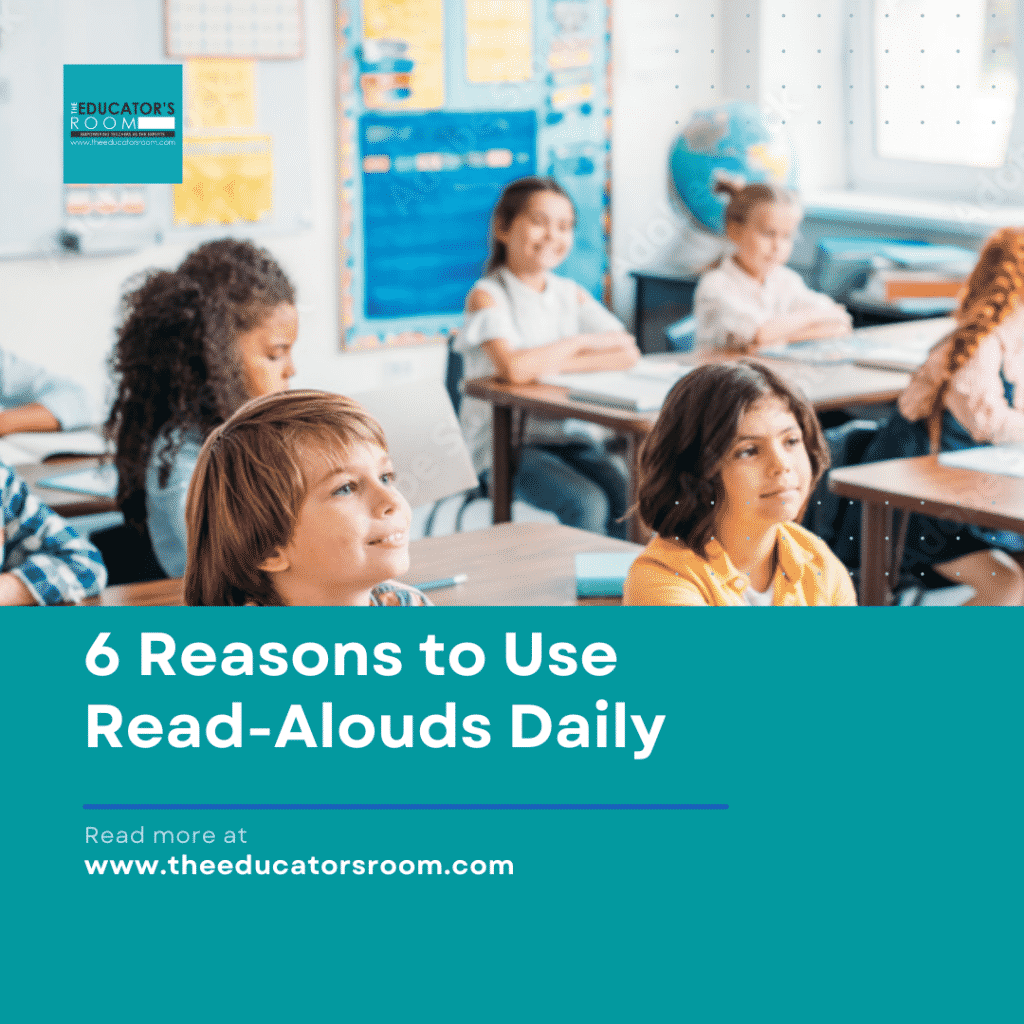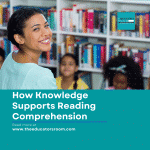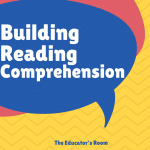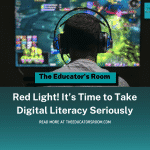Have you signed up for The Educator’s Room Daily Newsletter? Click here and support independent journalism!
The purpose of a read-aloud can be both entertainment and academic. From the academic perspective, read-alouds help build important foundational skills. Read-alouds provide a model of fluent and expressive reading, as well as an introduction to new and content-specific vocabulary. Read-alouds improve comprehension strategies such as visualization and connection skills. They also help children recognize what reading for pleasure is all about. According to the Center of Literacy Education at The University of Notre Dame, read-alouds improve comprehension, vocabulary, and fluency.
Read-alouds can be incredibly powerful when used in the classroom. These are six reasons why read-alouds should be incorporated daily into your classroom.
1. Consistent Example of Fluency & Expressive Reading
Fluency is the ability to read with speed, accuracy, and proper expression. Having a consistent example of fluent reading acts as a model for students in their own reading. As a novel or picture book is read orally, students are inherently learning from that example. They will hear the inflection, speed, pauses, and variation in the oral voice and will mark those skills as necessary for their reading. This can be particularly valuable for special education students as well. According to The Autism Helper, “by the teacher running the read-aloud, students can hear and learn about more advanced topics and participate with grade-level texts.”
2. Improves Vocabulary
Children acquire most of their vocabulary through listening to others. Read-alouds expose younger readers to a wide range of new and possibly advanced or content-specific vocabulary used appropriately. As students get older, and move into adulthood, most new vocabulary comes from reading. During read-alouds, students are exposed to new words in context and, therefore, will build a fundamental understanding of the new terminology. The use of synonyms or antonyms, context clues, or examples within the text will present this new vocabulary easily and smoothly to students.
3. Comprehension Strategies
Read-alouds are a great source for improving comprehension skills. To comprehend is to understand. Read-alouds provide students the opportunity to use their comprehension strategies and gain an understanding of literary media. Read-alouds remove the responsibility of fluency and decoding from the students and let them focus on their comprehension strategies such as making inferences or predictions, activating background knowledge, generating a summary, and organizing their thoughts and understanding. The Notre Dame Center for Literacy Education states that read-alouds “liberate the students from having to do the work of decoding and allows them to focus on comprehension, acquisition of new vocabulary, phonemic awareness, etc.” Perhaps the most obvious comprehension strategies that benefit from read-alouds are visualizing and making connections.
4. Opportunity to Visualize
Most will say that the book is better than the movie. The visuals we create in our minds while reading are generally more vivid than any movie, tv show or drama. Visualizing is creating pictures in our minds based on the activities in a story, the descriptions the author provides, and the connections made to the actions within the story. Read-alouds give students the opportunity to refine their visualization skills and then share and compare those visuals with others. Teach Mama corroborates this, “during a read-aloud, …. [students] continue to stretch their imaginations by practicing visualizing. When my class reads Tales of a Fourth Grade Nothing by Judy Blume, the best discussion is what Fudge (the young, troublemaker brother) looks like. Even though the author does a fabulous job of describing the character, everyone has their own visualization of what the character actually looks like.
5. Encourages Making Connections
Read-alouds help to establish skills in making connections. There are three types of connections: text to self (connections made to one’s own experiences), text to text (connections made to other texts), and text to world (connections made to something occurring in the world). When a student makes a connection between something new to something known, they are more prepared to understand it and remember it. Once a student establishes a connection, or is led to a connection, more and more connections are identified. As a result, the students have a greater understanding of the reading.
6. Building the Daily Habit of Reading
Reading every day in the classroom builds a healthy habit of reading. Students see the priority given to reading in the classroom, and therefore, they internalize that importance for themselves. During the primary and intermediate grades, students are still very impressionable. Making reading accessible and portraying reading as an activity that is enjoyable will help to develop a passion for reading in the students as well.
Shelley Kress is a Nationally Board Certified elementary school teacher in Las Vegas, NV. She is a Heart of Education nominee and finalist, received the Feature a Teacher Award in 2017, and was profiled on Teacher Tuesday in 2018. She has contributed writing for The Educator’s Room and The Las Vegas Baby Society Magazine, and was profiled on Love What Matters.
Editor’s Note: If you enjoyed this article, please become a Patreon supporter by clicking here.







